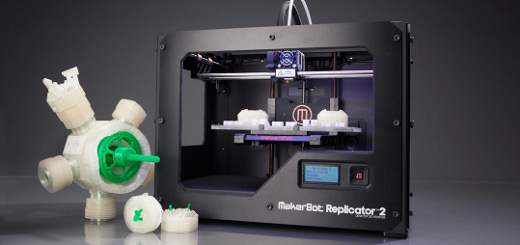AUVSI president discusses the future of unmanned systems
When Congress passed the FAA Modernization and Reform Act of 2012, it set the clock ticking toward the day when unmanned aircraft systems must be integrated into the national airspace. The target is Sept. 30, 2015, now just a little more than two years away.
That fast-approaching deadline has created a new intensity in discussions of unmanned systems, says Michael Toscano, president and CEO of the Association for Unmanned Vehicle Systems International.
“All of a sudden everybody realized, ‘OK, this is going to be real now,'” he says. “This technology we’ve kind of known about and we’ve seen in science fiction and we’ve seen on television and we’ve read about in Popular Mechanics and all these other places. Now all of a sudden, it’s no longer just a research effort, it is actually going to be used in application.”
Getting ready
For AUVSI, which is devoted to advancing unmanned systems and robotics, there’s a lot to do before the Congressional deadline, but Toscano says his group’s biggest near-term priority is education and communication.
Until now, unmanned systems — whether air, ground or maritime — have been primarily used by the military. Military people understand how the systems work and what the advantages are, but Toscano says that as unmanned systems spread into civil and commercial applications, those sectors need to be educated about the technology.
One reason that’s not easy is that currently the systems are not allowed on the civil and commercial side, which means there are a limited number of examples of real world applications of the technology. Toscano can rattle off any number of potential uses for unmanned systems — search and rescue, fighting wildfires, farming — some of which are still theoretical and some of which have been tested. (The FAA has granted waivers, known as Certificates of Authorization or COAs, to a variety of groups, many of which are research-oriented.) In general, however, he says there’s an easy way to think about places where unmanned systems might be useful.
“We have natural disasters all the time. And we saw what happened in Fukushima,” he says. “So there’s a case where you had a very dangerous and a very difficult situation. And we say we use the unmanned systems for the four D’s. That’s dirty, dangerous, difficult and dull missions.”
Keeping humans in the loop
One of the things Toscano says people don’t understand about unmanned systems is that they involve a variety of elements working together, including human beings. In the case of the unmanned aircraft system, he says, the thing that flies is only 30 percent of the system.
“There’s the thing that flies. There’s the thing it carries, the mission package payload. There’s a communication link that goes to it. There’s a ground station. And there’s human beings,” Toscano says. “So just because the pilot is not flying the plane doesn’t mean that the pilot is not flying the plane. You have an unmanned systems operator, and you have a capability that is attached to the bottom of this platform to do what that person knows how to do better than anyone else.”
As an example, he cites a farmer. A farmer knows how to farm better than anyone else but needs information to make smart decisions. So the UAS becomes a tool to help farmers spray or harvest or just generally understand their crops better.
He points out that the Japanese have been using UAS for spraying for 20 years, partially because the geography of Japan requires farmers to make the best possible use of a relatively small land mass. The government has helped support utilization of the technology, and Toscano says the country has more than 10,000 UAS operators (some of whom share a single system).
Issues of privacy
One of the first issues that comes up when you talk about unmanned systems is privacy, which Toscano acknowledges is a big deal and naturally on people’s minds.
“People say, ‘Wait a minute, now this thing can fly over and you can do XYZ with this thing and you can spy on me,'” he says.
However, here again, he says there are misconceptions that AUVSI would like to address. For one, he says UAS don’t include any leap-ahead technology in sensors or cameras or infrared, so essentially it’s the same surveillance technology that is already available today with a more efficient delivery system. That means they won’t be looking through walls or doing things that are wildly different from the camera networks already installed in many big cities.
He also points out that the laws existing today to protect our privacy will also apply to unmanned systems. Toscano notes that if you put a ladder up against someone’s house and look in the window, you are breaking the law. If you are across the street with a pair of binoculars doing the same thing, you are breaking the law. And whether you have a manned system or an unmanned system flying by trying to look in, you are still breaking the law.
The real test, of course, will be once these systems are actually flying and driving, when Toscano says we’ll find out if there are laws that need to be enacted based on consequences we couldn’t have foreseen.
“Fifty years ago, you couldn’t have thought to have Internet bullying laws,” he notes, “but here we are in the year 2013 and we’ve actually written them and deployed them.”
As unmanned systems begin to be introduced, there are also a lot of applications where privacy doesn’t come into play, like farming.
“Lettuce doesn’t mind if you watch it,” he jokes. “As a matter of fact, it’s good if you can, because then you know what’s going on.”
He believes those sorts of applications should be the first ones we go after — ones with a large upside and a relatively small downside — to give people time to better understand the technology.
In the meantime, Toscano doesn’t think privacy concerns should be treated lightly.
“It is an important issue, it’s an important concern that we have to deal with, because as you deploy this technology for the most part people are going to use it in a very responsible way,” he says. “But there are some people that might not.”
He says paparazzi who disregard the law today to take photos could take advantage of UAS to break the law in new ways. However, just because there will be misuse, Toscano says we need to look at the overall picture.
“You could take your car and drive 150 miles per hour,” he says. “You’re not supposed to, and if you do, you should be held accountable. But that doesn’t mean you can’t do it. And if you say I want to make sure no one can drive a car 150 miles per hour, then you just do away with cars. But because there is such a tremendous upside to it, and we already know what that is, that will never happen. So that situation is what we’re looking at right now. We need to make sure we’ve given good forethought to it and understand that that’s a possibility, and then be able to respond to that if and when it does happen.”
The upside of unmanned systems
Toscano says the first question you should ask with any unmanned system — or any other disruptive technology — is should we develop this? Is it good?
To answer that question, Toscano paints a picture of the current state of automotive travel. Right now, there are more than 32,000 annual automobile deaths in the U.S. There are more than 6.3 million accidents. And there are about $256 billion a year in medical costs and damages associated with those 6.3 million accidents. Worldwide, there are 1.2 million people killed in automotive accidents.
“So the question is, should we have driverless cars?” he says. “And the answer comes back a resounding ‘yes’ in the sense that in a third of all accidents that take place, the driver never puts their foot on the brake.”
Even limited automation, he says, could affect the number of annual deaths by an order of magnitude, just by consistently applying the brakes prior to a collision. And fully autonomous cars would not only save lives and increase efficiency, they would also provide more independence for the elderly and people with disabilities.
In other areas, he says unmanned systems could have an equally dramatic impact, but people still need to be educated on exactly what the advantages are.
Where do we go from here?
So, once you decide, “Yes, we should have have this technology,” then the question is, “OK, how do we do it?”
For the first time, the biggest challenges aren’t technical. Instead, public acceptance, regulatory and insurance issues top the list.
To address public acceptance, Toscano says the unmanned systems community needs to do outreach, because the average person’s perspective includes a lot of misinformation.
“The average person out there only sees what they see on TV and they hear what’s on the radios and stuff, and a lot of that is not accurate,” he says. “There’s some truth to some of the things, but for the most part, it’s skewed in the wrong direction, and a lot of it comes from the Hollywood aspects of Terminator — you know, the Big Brother-type aspects.”
On the regulation side of things, AUVSI is working closely with a wide number of government agencies. For unmanned aerial vehicles, it’s fairly straightforward, since the FAA has been designated to lead the charge. For driverless cars, it’s more difficult, since in the U.S. each state regulates its own highways — plus there’s also the Federal Highway Administration, Department of Transportation and the National Highway Traffic Safety Administration.
For now, it’s going to be a series of small steps, and even looking forward Toscano says driverless cars won’t simply take over the roads one day. When the Model T was introduced, he points out, we didn’t do away with horses. Instead, they are still part of a multibillion-dollar industry. People will always want to ride horses, and similarly there will be people who want to drive cars and watch NASCAR and work on their ’64 Mustang.
However, people don’t enjoy sitting in traffic (87 billion man-hours are lost to congestion) and driverless cars offer the ability to eat, sleep, drink, text or watch TV as you get from point A to point B. That’s probably the robotics equivalent of a “killer app,” and there’s little question people will want that technology implemented. At first, Toscano says it may be in the form of an HOV lane or some other dedicated lane, but he’s confident it will eventually happen.
“I use the old joke that they were interviewing a 100-year-old man, and they said, ‘You must have seen a lot of changes in your life,” Toscano says. “And he said, ‘Yes … and I was against all of them.’ So, this is kind of what you get with this. People don’t understand how it can change their life in such a great way. And so they’re against it, not because they don’t like it, but just because they don’t understand it.”



